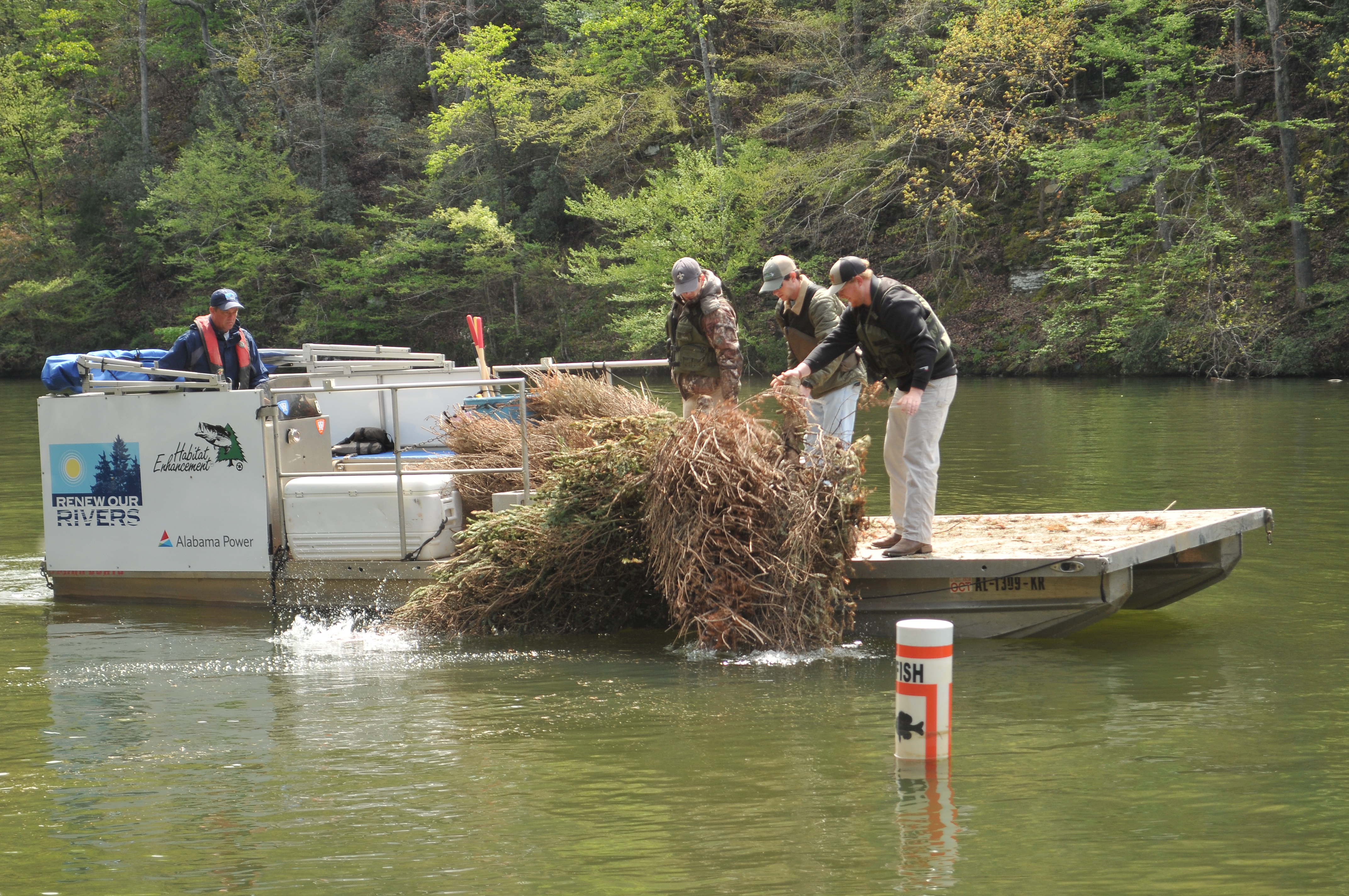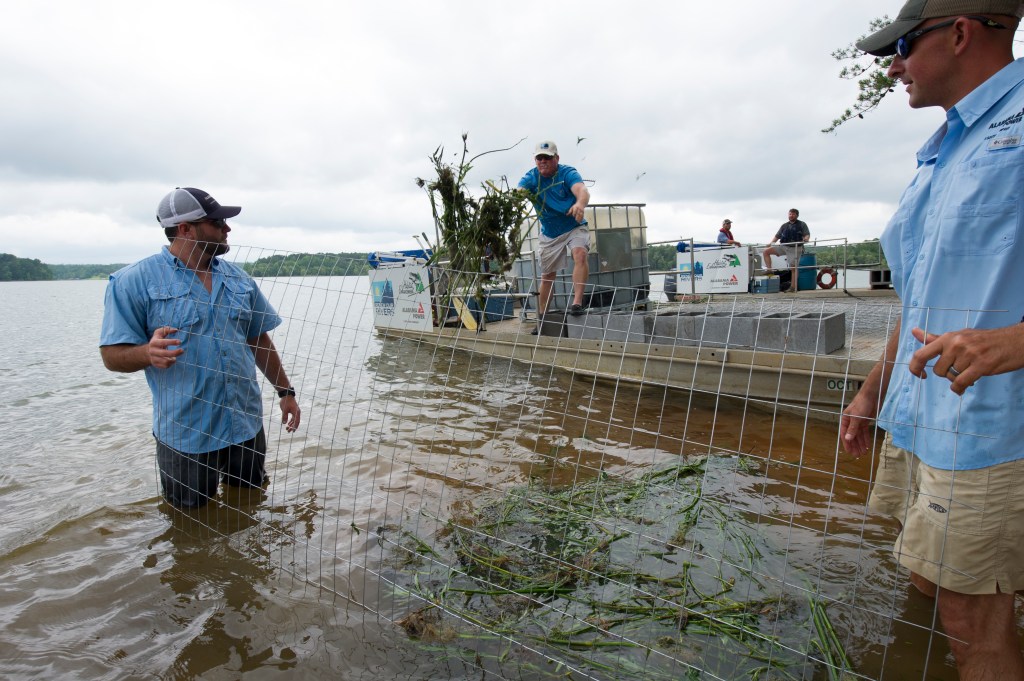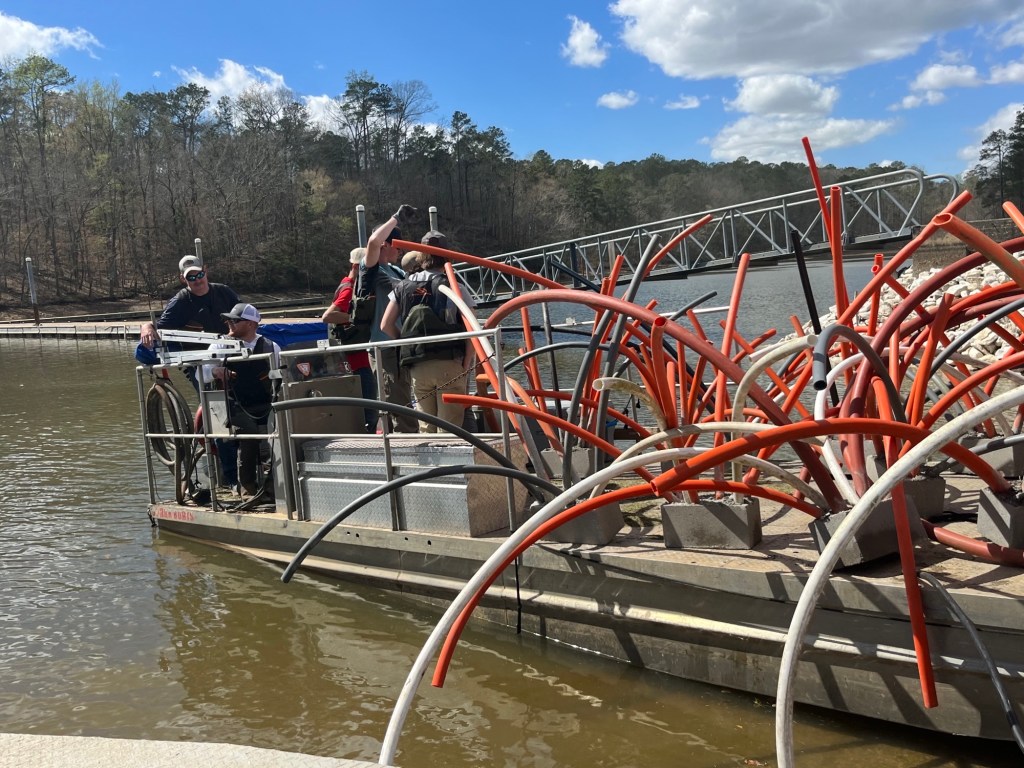
Some Alabama anglers fear for the future of bass fisheries on Neely Henry, Lay Lake and other Coosa River impoundments. The Bassmaster Elite Series Tournament May 11-14 was reflective of one of their concerns. Angling pressure has increased substantially on these fisheries during the past three decades, as tournament circuits have multiplied.
Additionally, these lakes are old, meaning most of their original woody habitat has long since rotted away. For example, Lay Lake was flooded more than a century ago.
But aquatic plant management by Alabama Power on Lay, Logan Martin, Neely Henry, Walter Bouldin, Mitchell, Jordan and Weiss is what concerns pros Matt Herren and Wes Logan the most. These are their home waters, and they don’t like what they’re seeing.

“I’ve spent many years of my life on the Coosa River, and I’ve seen a steady decline in the health of the fishery,” said Herren, who expressed his concerns about herbicide treatments in a lengthy social media post. He added that he doesn’t mind if he “ruffles some feathers if it will get people talking to create changes to help our waterways.”
Logan said, “Me and Herren are on the same page. I feel like the spraying has hurt the fisheries. I’ve been wanting to speak out about this.”
Alabama Power officials agree that reservoir aging and more angling pressure could be impacting the fisheries. But power company spokesmen disagree that herbicide treatments are damaging the fisheries.
“Our program hasn’t changed in recent years,” said Jason Carlee, manager of Water Field Services, Environmental Affairs, for the company. “We have a balanced program, and we try to meet the needs of all stakeholders. Anecdotally, there’s been a tremendous increase in pressure. That’s making fish tougher to catch and people sometimes blame aquatic plant management for that.”
Alabama Wildlife and Freshwater Fisheries biologist Mike Holley agrees with that assessment. “We have not seen any impacts to the fishery from the treatments Alabama Power has performed.”
One thing that has changed during the past decade, Carlee added, is management of water levels. That has contributed to an increase in vegetation and how much must be treated to address access and navigation needs. That, in turn, has attracted more public attention.
The upper reservoirs used to be drawn down annually 3 to 6 feet, while the lower three, Lay, Jordan and Mitchell, are “run of the river.” To enhance recreation access, those drawdowns have been reduced to 1 to 3 feet for the upper pools. Additionally, the lower three lakes used to be drawn down every two years for dock repairs and shoreline maintenance, which allowed potentially problematic vegetation to dry up. To protect federally listed (threatened or endangered) wildlife species, drawdowns now occur every five years. These changes in the level of winter drawdown on the upper reservoirs and the less frequent drawdowns of the lower reservoirs allow the invasive plants to spread.
“We’re typically focused on areas with higher boat traffic and public recreation,” Carlee said. Starting in March and extending into October, Alabama Power receives 800 to 1,000 requests from the public annually for treatments. Additionally, “we know areas that can be problems and we try to get in front in those areas,” he added. “But we also know that issues can change from year to year.”

Contrary to public perceptions, company biologists do most of the spraying, Carlee explained, with only a small amount being subcontracted. When that occurs, “we dictate the locations, provide the product and do the oversight.”
“We have no incentive to spray any more than we need to,” the environmental official explained. “We’d prefer not to spray at all, but we do it to protect the resource and for the benefit of a wide variety of stakeholders — not just the anglers.”
He added that if qualified biologists didn’t treat vegetation with approved herbicides, lakeside homeowners likely would act on their own, doing significant damage to the fisheries by applying unapproved or inappropriate chemicals with methods or at times when drift and overspray could damage desirable native plants.
Most of the problematic plants are invasive emergents, including water primrose, alligator weed, water lettuce and hyacinth, as well as submersed milfoil and some hydrilla. “But just because one of those plants is there, doesn’t mean we’ll treat it,” Carlee said. “Again, we may treat if it impacts lake ecology, access, navigation or operations.” He added that the company “values native vegetation,” especially water willow and buttonbush.
But Logan is not convinced that water willow is being valued and protected as it should be. “I just don’t know if they can keep up with who is spraying what and where,” he said. “Water willow gets sprayed, even if it’s accidental. And water willow is what’s saving Coosa River fisheries right now. And the more of it that is killed, the more the fishing is going to suffer.” He thinks that even if spraying doesn’t kill water willow directly, it somehow weakens the roots. “Then boat wakes tear them loose. And once willow is torn up by the roots, it doesn’t grow back.”
Carlee countered that biologists are not spraying to kill water willow unless it’s negatively impacting access. “Yes, people think they see us spraying water willow, but really we’re targeting invasive plants behind it,” he said. “We always try to use herbicides specific to the problem vegetation, using specific chemicals that target the invasive but only burn the tops of native plants which will regrow. This is an expected and temporary response.”

Alabama Power actively works to increase water willow in Coosa River fisheries, Carlee added. With help from bass clubs and others, it does plantings, along with putting out Christmas trees and other fish attractors that benefit anglers and fish.
Herren is also concerned about sediment buildup and water quality. “When vegetation is sprayed with chemicals, the decaying vegetation lies on the bottom for years and creates a layer of sediment that harms the lake bottom and everything that it comes in contact with,” he said.
But Carlee argued that when problematic plants are left untreated, they can block flow, causing sediment buildup. Additionally, he said, “Vegetation building up and dying off is a natural process. Plants die on their own and if left to grow into even larger mats, treatment becomes less effective, and more muck builds up as the mass dies off each fall and winter. “Treating small amounts before the mass can build up actually creates less muck.”
Only EPA-approved herbicides are used to target specific plants “and they all have very short half lives,” Carlee said. “They do not build up on the bottom. That accusation is not accurate.” But even if these anglers’ concerns regarding spraying are based on misconceptions, Logan still believes more must be done to sustain bass fisheries on the Coosa River and he’d like to see those who manage the resource be more responsive to angler concerns. “I’m no biologist, but I can see what’s happening to the fishery, I care so much about this place and, as much money as fishing brings in, I think they should too.”





